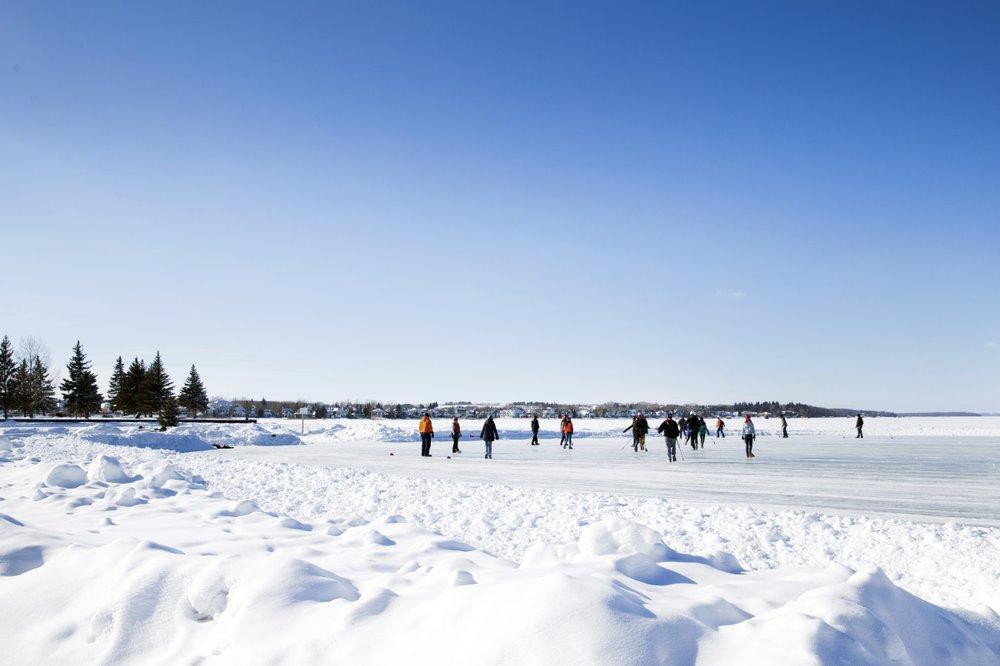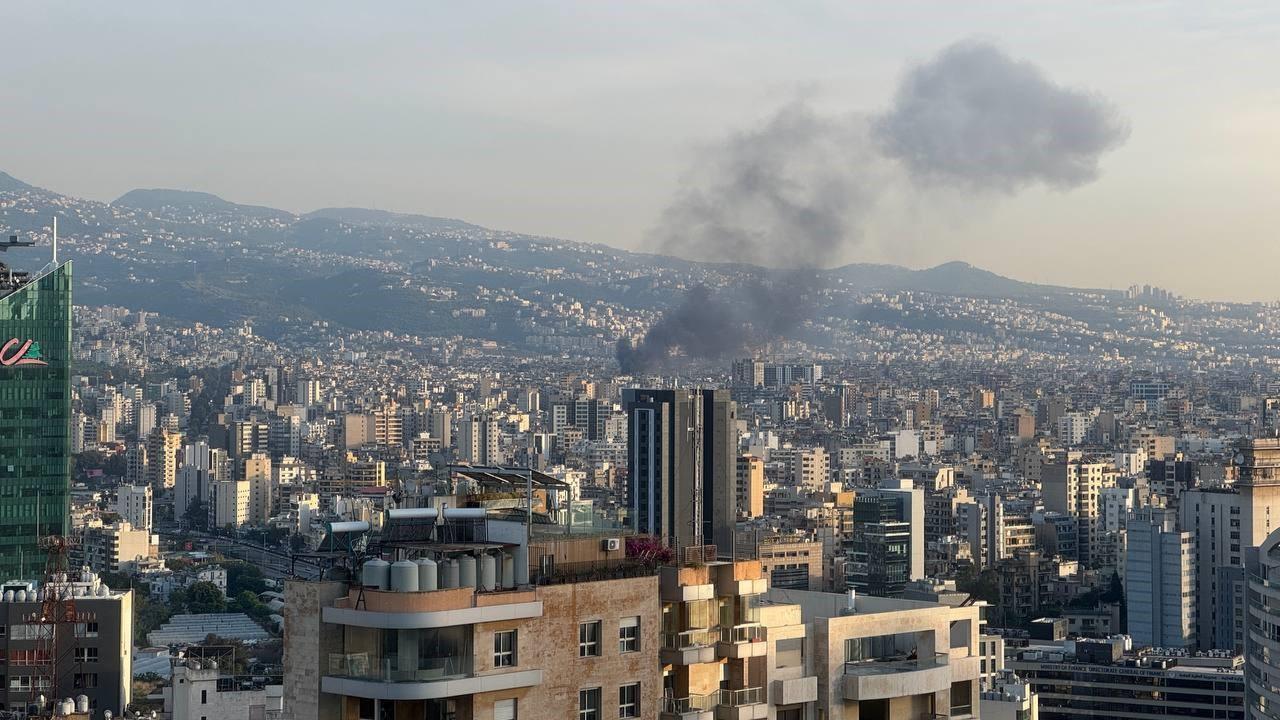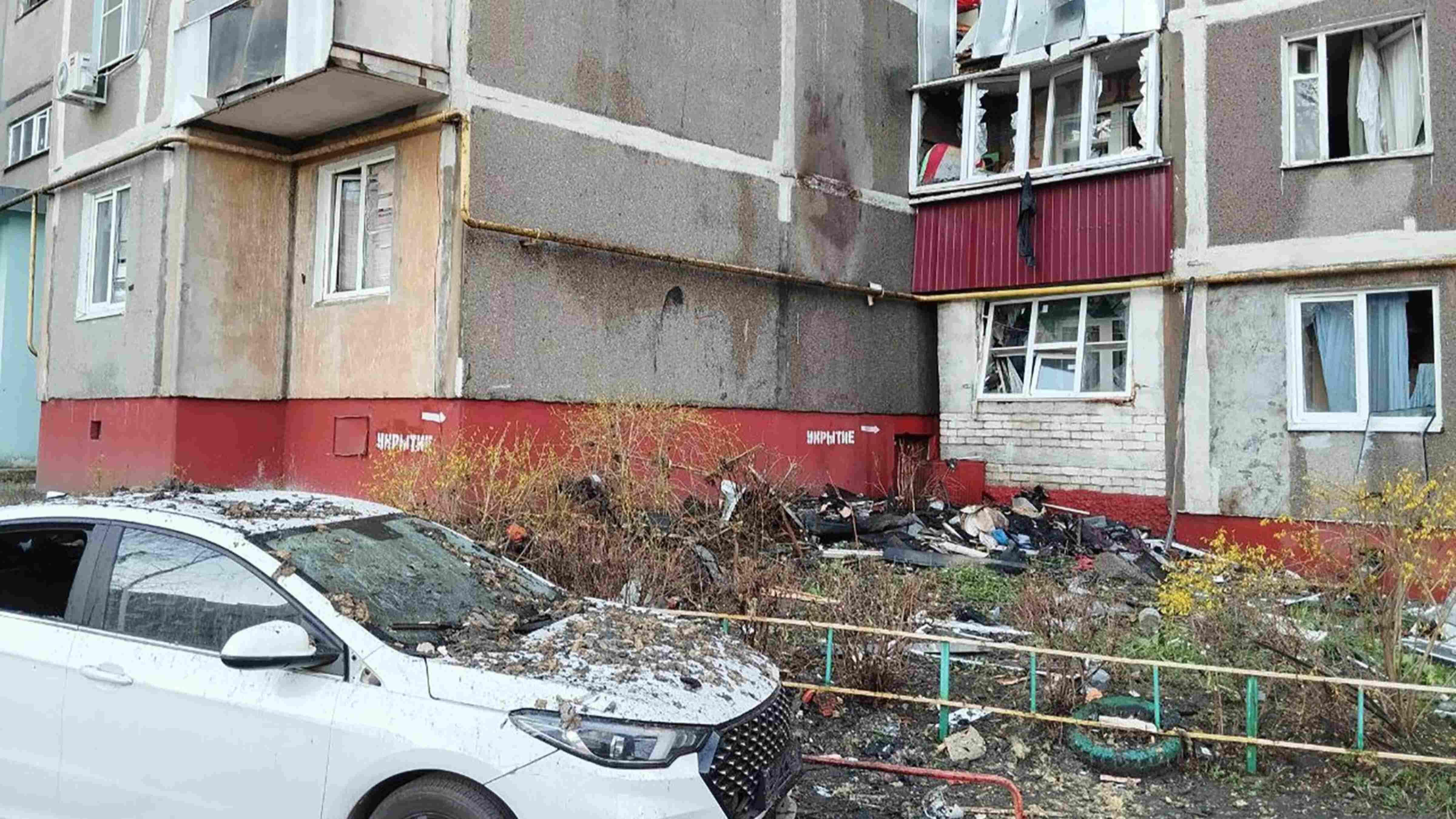Outdoor hockey traditions under shadow of climate change
KINGMAN-The Associated Press

Larry Asp grew up playing shinny outside in this tiny rural town he calls home again after 40 years away. Since returning, he also holds the keys to the outdoor "Rink of Dreams" that gives the 90 local residents the chance to skate outside during the keen Canadian winters.
Out here on the prairie an hour’s drive southeast of Edmonton, the ice in the former "Lutefisk Capital of Alberta" doesn’t seem to freeze as long as it used to, not like when Asp was a kid. He unlocked the doors to the rink, which in late September was simply dirt after a summer of hosting barrel racing and other equestrian events, and gazed into the wind-swept distance.
"We’re kind of at the mercy of the elements," said Asp, a retired member of the Kingman Recreation Association board. "In the springtime because of the [rink’s] white boards and the sun, it starts melting back from the boards pretty quickly. You’d be really lucky if you got four months out of it."
After a warm fall, the rink was back to being a rink again by mid-December and the skating, and the hockey, had begun. Two hours to the southwest in the Town of Sylvan Lake, the skating surface on the 544-acre namesake body of water opened Dec. 19 this year for activities that last until the melting begins, usually in mid-March.
Pond hockey has been a tradition for generations in places like Kingman and Sylvan Lake, across Canada, parts of the U.S. and cold environments around the world. Yet winter sports are, as Asp notes, at the mercy of the elements.
Experts say climate change is making for shorter, freezing winters and poses a threat to the very existence of the outdoor stick and puck games at the root of hockey.
"The climate is warming, we are having more variability, there is less ice coverage overall," said Michelle Rutty, assistant professor of faculty of environment at the University of Waterloo in Ontario. "It is conceivable that we will continue to see sort of a shorter season, so pond hockey is absolutely at risk. There’s no denying that."
The Winter Classic, an annual headline event on New Year’s Day for the National Hockey League, was put off this year because of the pandemic. No fond memories offered by players recalling how they laced up their skates outside, no fans bundled up in large, open-air stadiums to watch their teams play through whatever Mother Nature had to offer.
A generation from now, professional players might not even have those childhood memories.
"Everything has changed so much that they all have access to arenas," said Craig Berube, the Stanley Cup-winning coach in St. Louis who grew up in tiny Calahoo, less than two hours from Kingman. "Everybody’s got an arena in their town. They’re not going on ponds and playing hockey anymore."
Where they still can play outdoors, they do. Indoor arenas sprung up everywhere in the 1960s and ’70s, but Canada still has an estimated 5,000 outdoor hockey rinks, according to the International Ice Hockey Federation.
Neither Hockey Canada nor the Canadian Parks and Recreation Association keep data on the number of youth or adult players outdoors, though it’s an obvious and beloved part of the country’s fabric. Kingman, like scores of other communities, has Friday night skating parties that serve as a gathering event. A frozen corner of the 16-mile Sylvan Lake features two hockey surfaces, a place for casual skating and sometimes even a track to get up in speed.
"This is the quintessential Canadian experience out there," said Joanne Bjornson, who has worked for the Town of Sylvan Lake for eight years. "Every community has an outdoor rink to skate on or to play a little stick and puck on."
Skating on a frozen body of water or building a backyard rink is as Canadian as it gets. Walter Gretzky famously built and filled one with a lawn sprinkler in Brantford, Ontario, for young phenom Wayne and his siblings. Pittsburgh superstar Sidney Crosby loved outdoor games as a youth in Nova Scotia and scratched the itch three years ago by joining a surprised young player as his local outdoor rink in Mont-Tremblant, Quebec.
In Kingman, Wilf Brooks and Trent Kenyon raised money to sustain the hamlet’s "Rink of Dreams." Kenyon said the rink, which is attached to a post office, is revenue-positive now and hosts 60-70 skaters each Friday night.
"We have a Zamboni, so it’s really nice ice in the winter," Kenyon said. "Very few places can you go out and it doesn’t cost anything and you just go out and skate on nice ice and have fun."
Brooks, who sold sports equipment for 50 years, estimated there were probably 125 outdoor rinks in the Edmonton area in 1963, but only around 25 remain today. It’s a far cry from when hockey in northern Alberta was played outside far more often than under a roof.
"Probably 70% of all youth played the game or skated on a pond or an outdoor rink because they were all within a short walking distance, whether it was in a small town, on the farm or in the city," Brooks said. "It is a lifeline. It’s a rite of passage."
Maybe not forever. According to Canada’s Changing Climate Report released in 2019, seasonal lake cover has declined across Canada over the past 50 years because of later ice formation and earlier breakup. The projection is the fall freeze could come 5-15 days later and the spring lake breakup 10-25 days earlier by the middle of the 21st century, depending on various emissions factors.
"The winter season is getting shorter," said Stuart Evans, geography professor at the University of Buffalo and the RENEW Institute. "The first freezing day comes later and the the last freezing day of winter comes sooner, so you’ve just got fewer days. And if you’re somewhere marginal, presumably at some point you run out of enough days."
Brooks said the past five winters in Edmonton have been plenty cold, which Rutty pointed out can be true even as the climate trend shows significant warming over the past 30 years. A 2016 study by the government’s Environment and Climate Change Canada showed the average winter temperature across the country has risen by almost 6 degrees Fahrenheit over the past 70 years.
Mitchell Dickau of the Matthews Climate Lab at Montreal’s Concordia University studied and mapped out the number of outdoor skating days in Quebec’s biggest city, with data showing it could decrease from 50 now to 11 by 2090.
"What’s that going to mean for just our day-to-day life?" Dickau said. "Currently we have five months of the year where we’re in the middle of winter, and it might not feel like that because there’s only 11 skating days."
For now, at least, there are many more than that on Kingman’s Rink of Dreams, with plenty of hot chocolate and hot dogs available when the temperature plummets.
"It’s our culture. It’s our bread and butter," Brooks said. "Every kid wants to put on a pair of skates, even if they just go skate down the river."
















